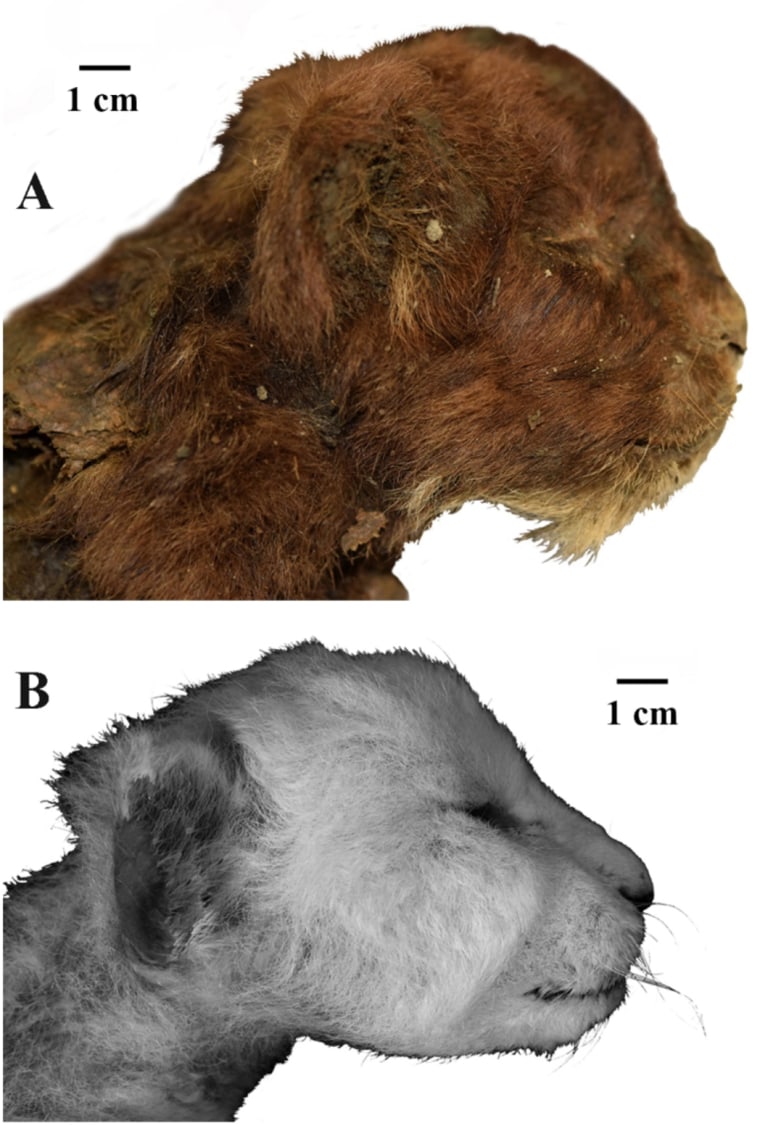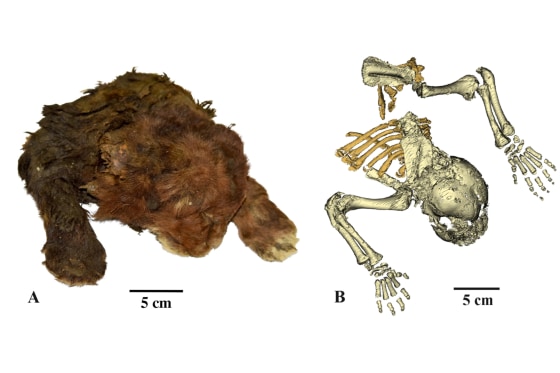Calling all "Ice Age" lovers: The frozen remains of a 35,000-year-old saber-toothed cat have been studied for the first time in history, according to a study published Thursday in the journal Scientific Reports.
The animal's mummified remains, which include its head, forelimbs and part of its chest, were found well-preserved in Yakutia, Russia, in 2020 and determined to belong to a cub around 3 weeks old, per the study.
The young cub's most notable characteristics are its small ears, long neck and front arms, dark brown fur, and large mouth opening, the study authors wrote. When compared with the remains of a modern lion cub of a similar age, it was determined that the cat mummy shared characteristics with the subfamily Machairodontinae, specifically the Homotherium genus — cats with sharp, curved saber teeth that existed around 12 million to 10,000 years ago in North America and Europe.

Compared with the modern lion cub's remains, the Homotherium cat's ears are up higher on the skull, and its mouth opening is about 11% to 19% larger, according to the study. Its neck is also "longer and more than twice as thick" as the modern cub's.
For "Ice Age" movie franchise fans, the description of the saber-toothed cat might sound familiar. The character Diego, a saber-toothed tiger, has very similar traits to the 35,000-year-old cub.
This marks the first time remains of this kind have been studied.
One of the study’s authors, Professor Alexey V. Lopatin, said it was a “fantastic feeling” to see such a long-extinct animal.
"This is the first discovery of a mummified mammal that has no direct analogue in modern fauna," Lopatin told NBC News.
Studying the young cub confirmed modern reconstructions of the adult Homotherium, Lopatin said.
"The study of the mummy made it possible for the first time to observe its fur, the shape of the muzzle, the shape and position of the auricle, the morphology of the mouth opening and nasal planum, the shape of the front paw and the features of the muscle distribution," Lopatin said.

